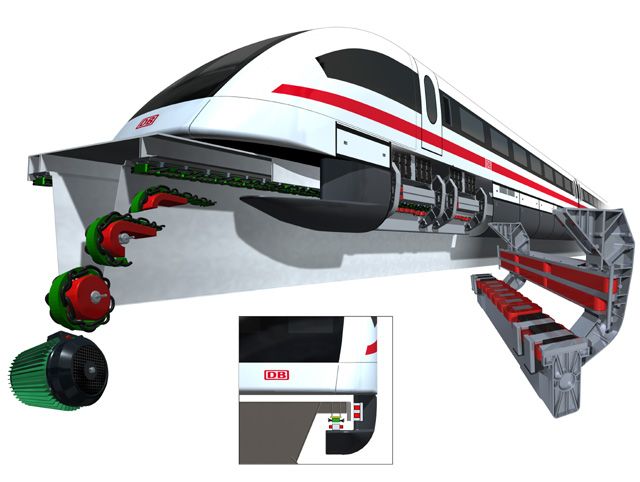The Maglev system seems to be the future of high-speed transportation, but how does it work?
These trains float above the tracks using the basic principles of magnets to replace the old steel wheels and rail trains.
There is no friction, which means these trains can reach speeds of hundreds of kilometers per hour. However, high speed is just one of the main advantages of Maglev trains. In fact, since the trains rarely touch the tracks, there is much less noise and vibration compared to typical wheeled trains on tracks. Less vibration and friction result in fewer mechanical failures, which means that maglev trains are less likely to experience delays due to weather conditions. The first patents for Maglev maglev train technology were filed by the French-born American engineer Emile Bachelet in the early 1910s.

Levitation maglev train
Passenger behaviour
It didn’t take long before engineers began to design railway systems based on this futuristic vision. Soon, they believed that passengers would board magnetically propelled cars and travel from one place to another at high speeds, without the maintenance and safety concerns of traditional railways The big difference between a maglev train and a conventional train is that maglev trains do not have an engine, at least not the type of engine used to pull typical railway cars along steel tracks. Instead of using fossil fuels, maglev trains use the magnetic field created by electrified coils in the guideway and the train’s undercarriage to propel it forward.
The magnetic attraction of electromagnetic propulsion
If you have ever played with magnets, you know that opposite poles attract and like poles repel, and this is the basic principle of electromagnetic propulsion. Electromagnets are similar to regular magnets in that they attract metallic objects, but magnetic traction is temporary. You can easily create a small electromagnet by connecting the ends of a copper wire to the positive and negative ends of an AA, C, or D battery. This creates a small magnetic field. If one end of the wire is disconnected from the battery, the magnetic field is eliminated.
The magnetic field created in this experiment is the simple idea behind a maglev train system.



